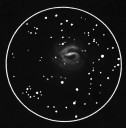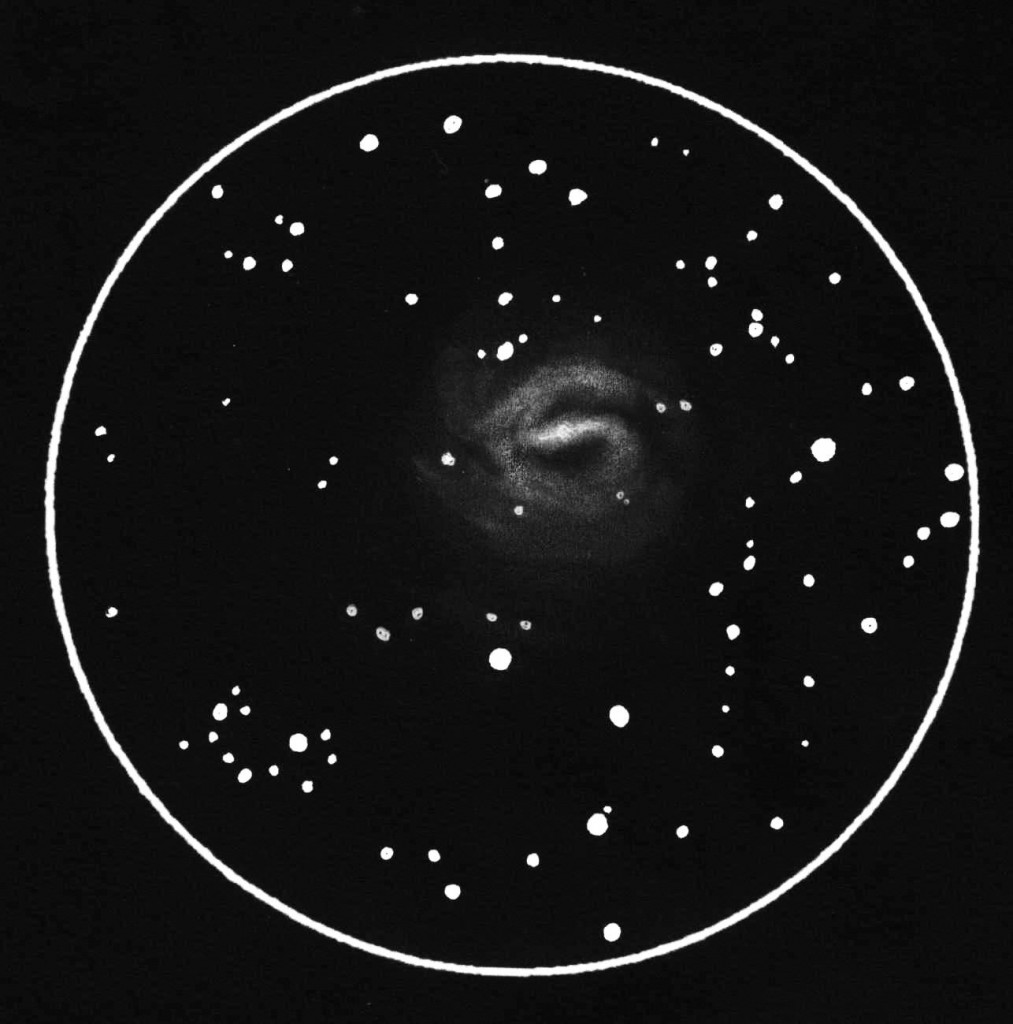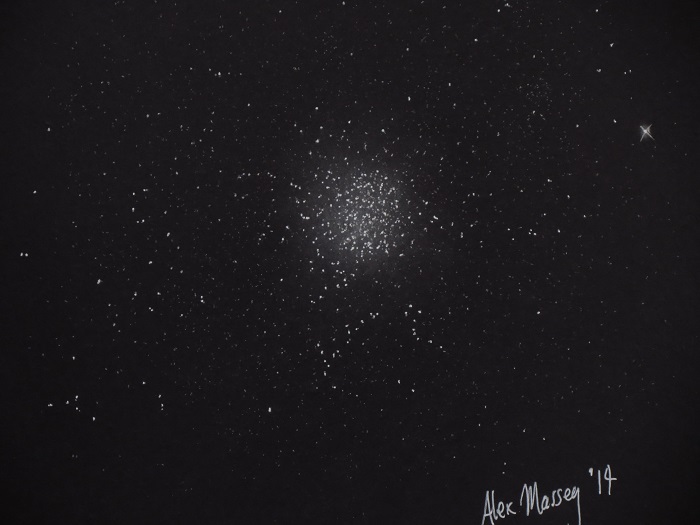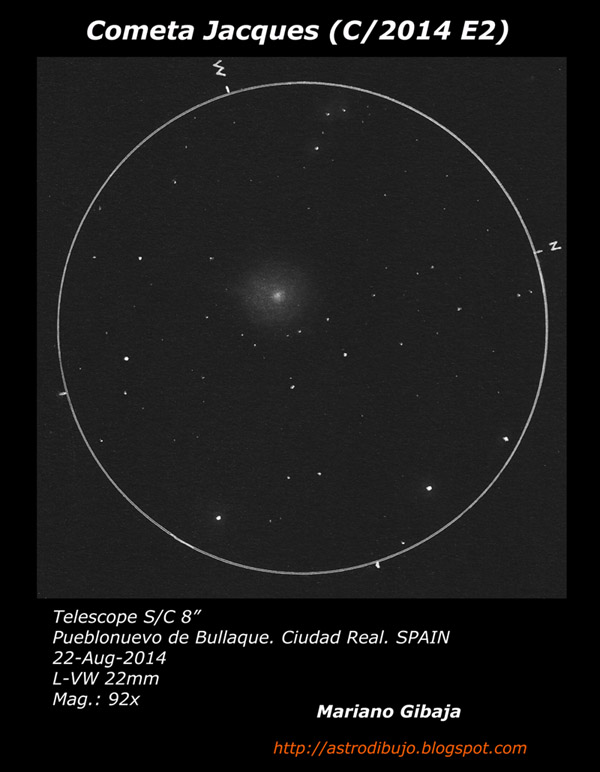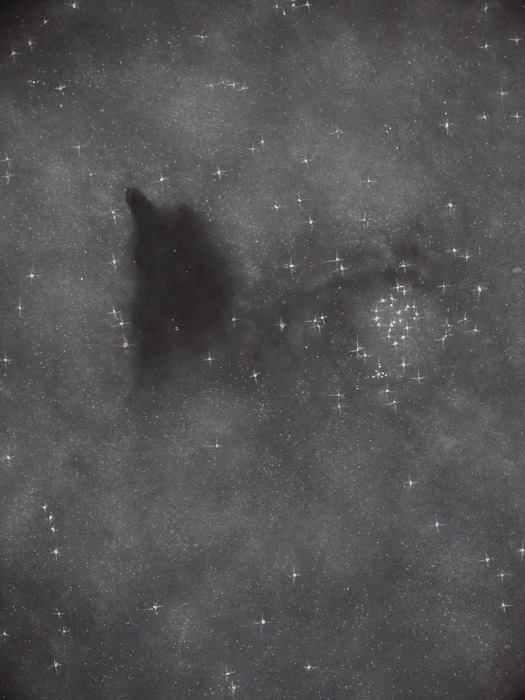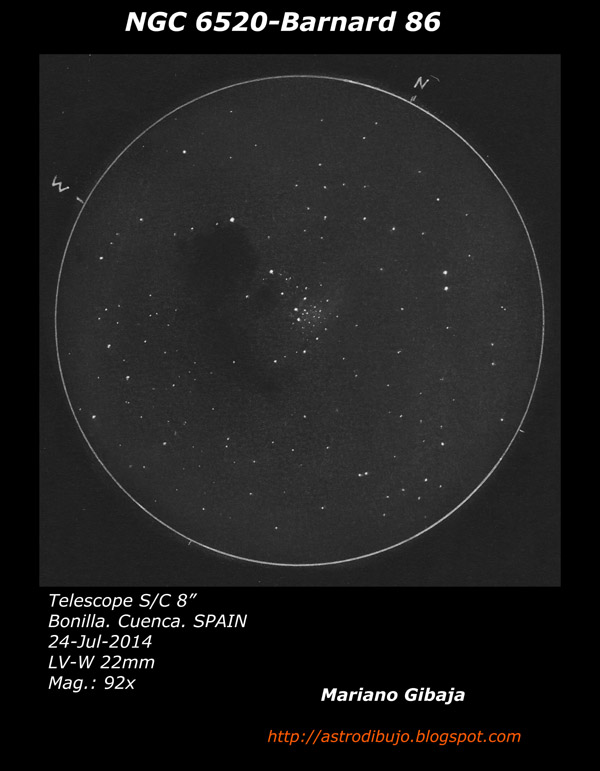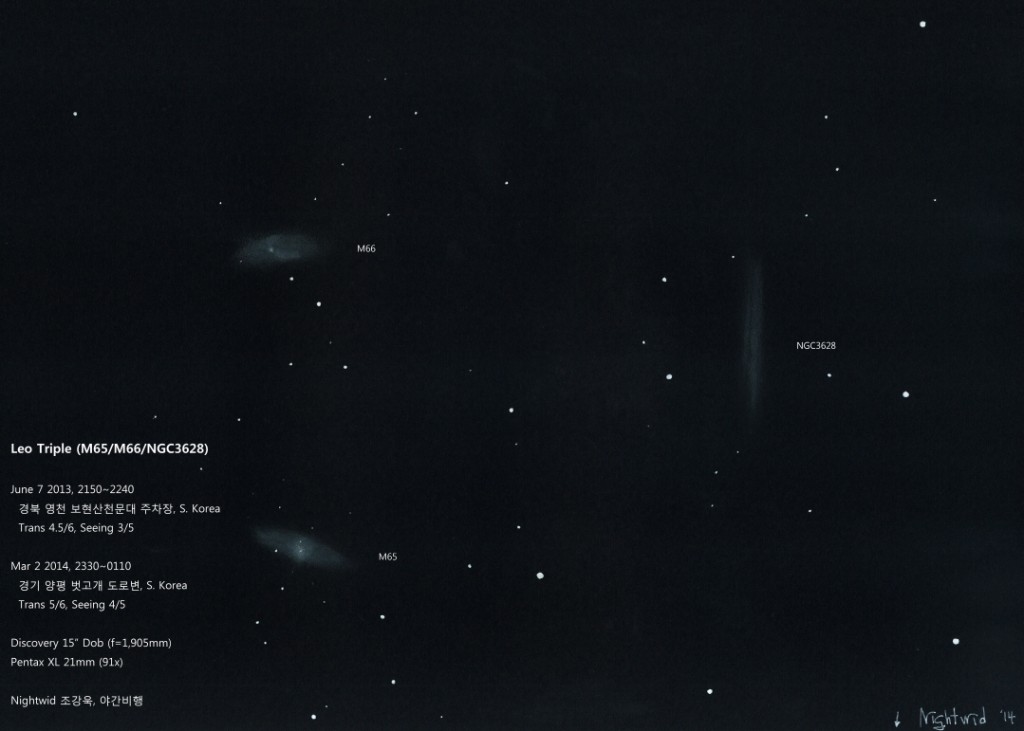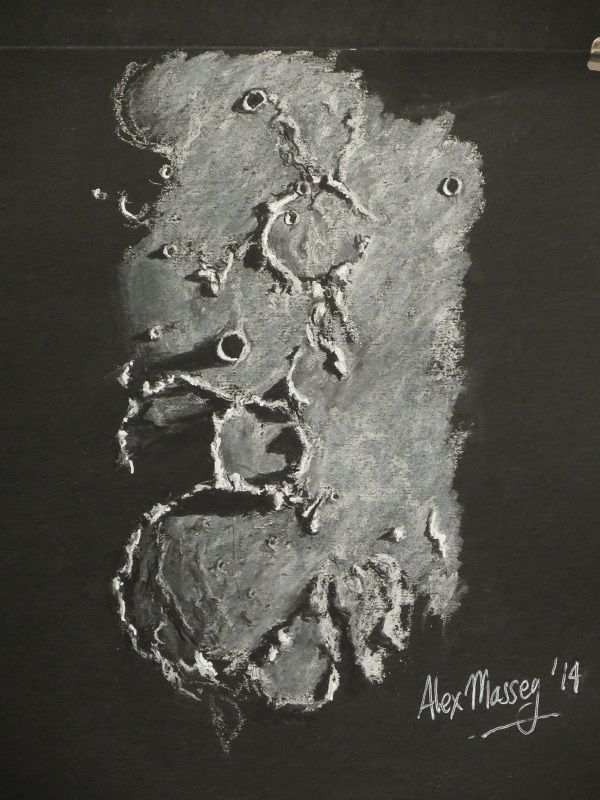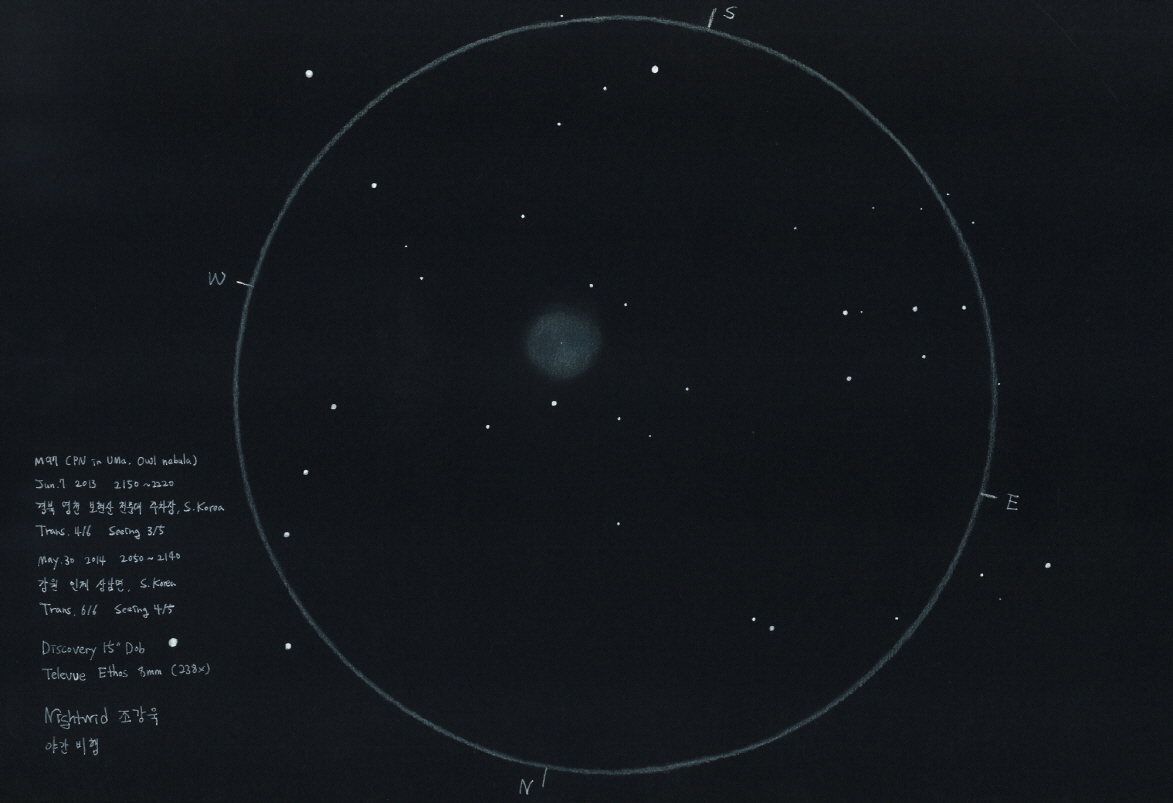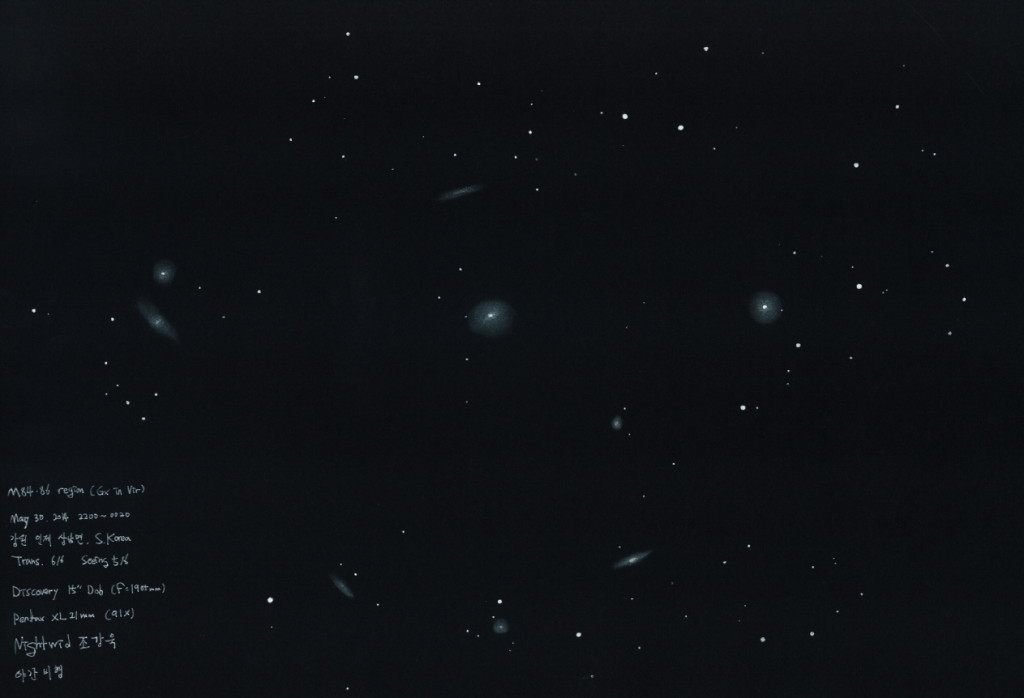Hello all,
One thing all astronomers chase is ideal atmospheric conditions. An apparently clear night can present poor transparency or poor seeing due to thermal energy high up in the atmosphere. But every now and then, ideal or even very close to ideal conditions do present themselves, and it gives us the finest view of the heavens.
Such conditions presented themselves to me on the night of January 18.
My first view of Thor’s Helmet, NGC 2359, was four years ago during the Ice In Space Astro Camp. My view of it seemed to me to be a fine one. So much so it inspired me to sketch it straight away! Four years later, presented with a night of exceptional transparency, I revisited Thor’s Helmet as it was right on zenith for me.
WOW! What an image! This night Thor’s Helmet had nebulosity extending in four different directions, not just the two from my first view. So much more structure was apparent, and the nebulosity extended so much further, and so many more stars were visible too.
I’ve also included an image of the sketch I did of Thor’s Helmet in 2011 for comparison. It is this way that the full impact of the differences in conditions between the two nights can be appreciated.
I hope you enjoy this sketch.
Alex.
Object: Thor’s Helmet, NGC 2359
Scope: 17.5” push-pull Karee dob
Gear: 30mm 82° Explore Scientific, 91X, OIII filter
Date: 18th January, 2015
Location: Katoomba Airfield, Australia
Media: White soft pastel, charcoal and white ink on A4 size black paper
Duration: approx. 1hr.
